Advanced Functions,Grade 12th,University Preparation (MHF4U)


-
Name:Advanced Functions,Grade 12th,University Preparation (MHF4U)
-
Grade:Grade 12th
-
Prereq:Functions,Grade 11th,University Preparation (MCR3U)
-
Code:MHF4U
-
Type:University Preparation
-
Credit Value:1
-
Develop Date:2021-01-01
-
Course Price:CAD $1300
-
Status:Active
Course Description:
This course extends students’ experience with functions. Students will investigate the properties of polynomial, rational, logarithmic, and trigonometric functions; develop techniques for combining functions; broaden their understanding of rates of change and develop facility in applying these concepts and skills. Students will also refine their use of the mathematical processes necessary for success in senior mathematics. This course is intended both for students taking the Calculus and Vectors course as a prerequisite for a university program and for those wishing to consolidate their understanding of mathematics before proceeding to any one of a variety of university programs.
Aims and Objectives:
- Demonstrate an understanding of the relationship between exponential expressions and logarithmic expressions, evaluate logarithms, and apply the laws of logarithms to simplify numeric expressions.
- Identify and describe some key features of the graphs of logarithmic functions, make connections among the numeric, graphical, and algebraic representations of logarithmic functions, and solve related problems graphically.
- Solve exponential and simple logarithmic equations in one variable algebraically, including those in problems arising from real-world applications.
- Identify and describe some key features of polynomial functions, and make connections between the numeric, graphical, and algebraic representations of polynomial functions;
- Identify and describe some key features of the graphs of rational functions, and represent rational functions graphically.
- Solve problems involving polynomial and simple rational equations graphically and algebraically.
- Demonstrate an understanding of solving polynomial and simple rational inequalities.
- Demonstrate an understanding of average and instantaneous rate of change, and determine, numerically and graphically.
- Interpret the average rate of change of a function over a given interval and the instantaneous rate of change of a function at a given point.
- Determine functions that result from the addition, subtraction, multiplication, and division of two functions and from the composition of two functions, describe some properties of the resulting functions, and solve related problems.
- Compare the characteristics of functions, and solve problems by modeling and reasoning with functions, including problems with solutions that are not accessible by standard algebraic techniques.
Expectations:
- Characteristics of Functions
By the end of this course, students will:
- Be able to deal with different types of functions and learn where to apply each of them.
- Learn to derive other relations and sketch them on a graph.
- Understanding Rates of Change
By the end of this course, students will:
- Explore the rates at which functions change.
- Learn a new way to calculate the rate of change of a function.
- Polynomial Functions
By the end of this course, students will:
- Define the process of iteration and how fractal object displays properties of self-similarity.
- Analyze the estimation of the number of zeros that any polynomial functions possess.
- Learn to represent an equation in different forms to learn more information from them directly.
- Polynomials Equations and Inequalities
By the end of this course, students will:
- Solve polynomial equations.
- Use a function to solve various problems which involve more than just one solution or an infinite number of solutions.
- Rational Functions, Equations and Inequalities
By the end of this course, students will:
- Identify the types of functions and how they affect the changes.
- Solve equations of different forms and simplify them so they can be more understandable.
- Trigonometric Functions
By the end of this course, students will:
- Explore FM radio stations and many other wireless technologies (such as the sound portion of a television signal, cordless phones, and cell phones) that transmit information using sine waves.
- Determine the equations that are used to identify these sine waves, however, do not use angles that are measured in degrees.
- Demonstrate an alternative way to measure angles, and give the effect on graphs of trigonometric functions.
- Trigonometric Identities and Equations
By the end of this course, students will:
- Learn to identify similar trigonometric equations.
- Solve a difficult problem by using its equivalent and simpler form to solve it.
Unit-wise Progression:
|
Unit
|
Title and Subtopics |
|
Unit 1 |
Characteristics of Functions Functions
-Hours: 16 |
|
Unit 2 |
Rates of Change
- Hours:14 |
|
Unit 3 |
Polynomial Functions
- Hours: 18 |
|
Unit 4 |
Polynomials Equations and Inequalities
- Hours: 14 |
|
Mid-Term - Hours: 2 |
|
|
Unit 5 |
Rational Functions, Equations and Inequalities
- Hours: 13 |
|
Unit 6 |
Trigonometric Functions
- Hours: 12 |
|
Unit 7 |
Trigonometric Identities and Equations
- Hours: 13 |
|
Culminating Activity – 5 Hours |
|
|
Final Term – 3 Hours |
|
|
Total – Hours 110 |
|
Teaching/Learning Methodologies:
This course supports learning by providing students with opportunities to review and activate prior knowledge (e.g. reviewing concepts related to trigonometry and geometry from prior mathematics courses) in order to gain new skills. The course further leads students toward recognizing opportunities to apply the knowledge they have gained to solve problems. This course models the use of spreadsheet software, TVM spreadsheet, and additional software like Demos® which will allow students to investigate the key concepts of the course Outside the Box. This course connects the concepts taught to real-world applications, such as exponential decay, simple harmonic motion and The Golden Ratio. With the help of examples, practice problems, and solution videos, the course models various ways to demonstrate understanding poses questions that require students to use different representations as they are working at each level of conceptual development - concrete, visual, or symbolic, and allows individual students the time they need to solidify their understanding at each conceptual stage. Through the use of interactive activities (e.g. multiple choice quizzes, and drag-and-drop activities) students receive instantaneous feedback and are able to self-assess their understanding of concepts. A few of the things students will be provided are the following:
- Lesson plans
- PowerPoint presentations
- Videos
- Reading Packs
- Assignment for Learning
- Assessment of Learning
- Quiz
All of these are a cluster of downloadable and embedded files that will be provided to each candidate with the progression of the course.
E-Learning Approach:
E-learning is not only a training method but it is a learning method that is tailored to individuals. It is found that different terminologies have been used to define learning that takes place online which actually makes difficult to develop a generic definition.
E-learning includes the delivery of content via Internet, Intranet, and Extranet, satellite broadcast, audio-video tape, interactive TV and CD-ROM. The term implies that the learner is at a distance from the tutor or instructor, that the learner uses some form of technology.
With attention to this new system of education that is spreading across the globe its imperative that the content of such study programs are enhanced and modified to serve both the learner and the instructor well whilst dealing with the gap of conventional studying methodologies. Thus the courses promise its reader an experience full of engagement, student-concentric approach, personalization and Interaction. Using a wide array of multimedia tools, cloud based LMS and diverse repository of subject tailored audio-visual material that student can utilize and learn in a stimulated work environment where he’s in charge of his work hours.
Our e-learners paddle through these courses in the mediation of skilled mentors to the finish line with understanding of their subjects application into real world problems following a futuristic model of education.
Strategies for Assessment and Evaluation of Student Performance:
Assessment is the ongoing gathering of information related to the individual student’s progress in achieving the curriculum expectations of the course. To guide the student to his/her optimum level of achievement, the teacher provides consistent and detailed feedback and guidance leading to improvement. Strategies may include:
- Diagnostic assessment
- Formative assessment
- Summative assessment
- Performance assessment
- Portfolio assessment
- Rubrics
- Checklists
The final grade will be based on:
|
Weightage in Percentage
|
Categorical Marking Breakdown |
|
40% |
Course Work |
|
20% |
Mid Term |
|
10% |
Culminating Activity |
|
30% |
Final Exam |
|
Assessment of Learning
|
||
|
Student Product |
Observation |
Conversation |
|
Learning Logs (anecdotal) Assignment Pre-tests (scale/rubric) Quizzes (scale/rubric) Rough drafts (rubric) Graphic organizers (scale) Peer feedback (anecdotal/checklist) Reports (rubric) Essays (rubric) Webbing/Mapping (rubric/scale) Vocabulary notebooks (anecdotal) Visual Thinking Networks (rubric) Tests (scale/rubric) Exams
|
Self-proofreading (checklist) Class discussions (anecdotal) Debate (rubric) PowerPoint presentations (rubric) Performance tasks (anecdotal/scale)
|
Student teacher conferences (checklist) Debate (rubric) Peer-feedback (anecdotal) Peer-editing (anecdotal) Oral pre-tests (scale/rubric) Oral quizzes (scale/rubric) Oral tests (scale/rubric) Question and Answer Session (checklist)
|
Resources Required by the Student:
- Microsoft Suite (Word, Excel, Power-point etc.)
- A laptop, or Mac, or Android, or any other operating system functional enough to use the web browser and use online software.
- Curriculum Reference: The Ontario Curriculum, Maths







